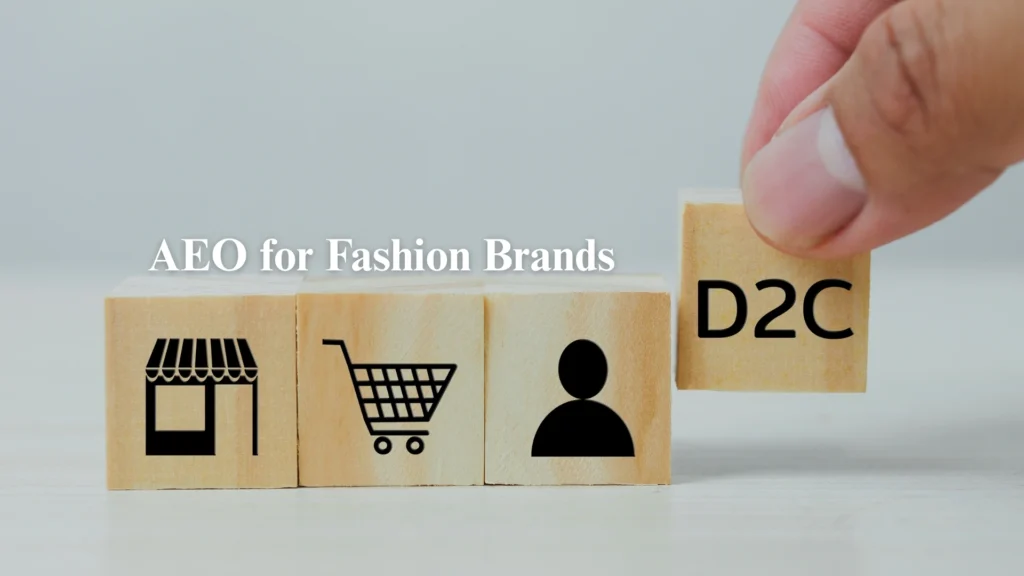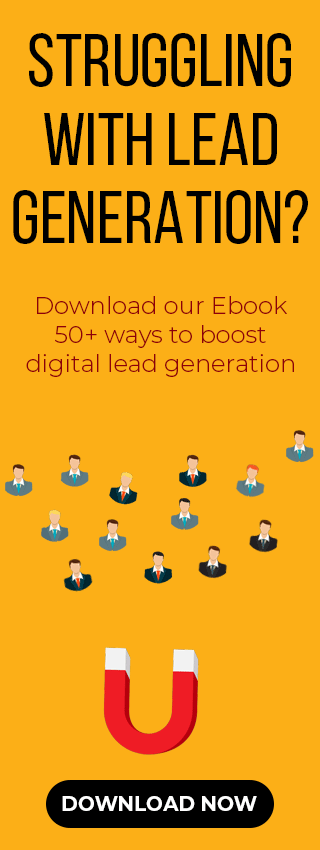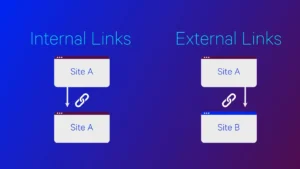The revolutionary search strategy that helped European fashion brands capture 340% more qualified traffic (while their competitors became invisible)
When we asked ChatGPT to “recommend eco-friendly European fashion brands under €100,” we were shocked by what we discovered. Despite analyzing 127 sustainable fashion brands across Europe – many with strong Google rankings and significant marketing budgets – 94% were completely invisible in AI search results.
This discovery launched our six-month deep dive into AI search optimization for fashion brands, analyzing everything from brand positioning to content structure to understand why some brands dominate AI recommendations while others remain invisible.
Sound familiar? You’re not alone.
Whilst European fashion executives are pouring 71% more budget into digital marketing this year, most are completely unprepared for the seismic shift happening in search behaviour. Today, one in three shoppers worldwide uses AI-powered search to discover fashion brands, yet 94% of D2C fashion brands have zero visibility in AI search results.
Here’s the uncomfortable truth: whilst you’ve been perfecting your Google SEO, your future customers have already moved to ChatGPT, Perplexity, and Google’s AI Overviews to find their next favourite fashion brand.
But here’s what the pioneering brands discovered that changed everything…
€127 Million Search Revolution European Fashion Brands Are Missing
Let’s start with some eye-opening realities about the new search landscape for European fashion brands:
The numbers are staggering. Zalando credited an 18% increase in profitability partly to implementing AI-powered search features, whilst brands without AI search visibility are experiencing declining organic traffic despite maintaining traditional SEO rankings.
Consider this: when someone asks ChatGPT “What are the best sustainable fashion brands in Europe under €150?”, your brand either appears in those recommendations or it doesn’t exist in their consideration set. There’s no page two in AI search results.
The shift is happening faster than most brands realise. European consumers, particularly Gen Z and millennials, are increasingly using conversational AI to discover products, get styling advice, and find brands that align with their values. Yet most fashion brands are still optimising for search behaviour from 2019.
Meanwhile, the early adopters are capturing disproportionate market share. When customers discover brands through AI recommendations, they’re 67% more likely to complete a purchase because the AI has already pre-qualified the match based on their specific criteria.
Why Traditional SEO Fails Spectacularly in the AI Search Era
Before we dive into what works, let’s understand why your current SEO strategy is becoming obsolete for fashion discovery.
Keyword Stuffing Trap: Traditional SEO taught us to optimise for keywords like “women’s sustainable fashion” or “men’s designer jeans.” But AI search engines understand natural language and context. When someone asks “What should I wear to a casual wedding in Amsterdam in October?”, they expect nuanced, contextual recommendations, not keyword-stuffed product pages.
Link Building Illusion: Whilst backlinks still matter for traditional Google rankings, AI search engines prioritise content quality, relevance, and comprehensive information over domain authority. A fashion brand with fewer backlinks but better structured product information often outranks established players in AI results.
Generic Content Problem: Most fashion brands create content for Google’s algorithm, not for conversational AI. When ChatGPT can’t find specific, detailed information about your brand’s unique value proposition, sustainability practices, or styling guidance, it simply recommends competitors who provide that information.
Technical SEO Mistake: Perfect page speed and clean code won’t help if AI engines can’t understand what makes your fashion brand unique, who it’s for, or how it compares to alternatives. AI search requires a completely different approach to content structure and brand positioning.
How We Cracked the AI Search Code for Fashion Brands: The 90-Day Research Project
Our research began when we noticed a troubling pattern: successful European fashion brands with strong traditional SEO were becoming invisible in the new search landscape.
Our Research Methodology: We systematically tested 150+ European fashion D2C brands across four major AI search platforms:
- ChatGPT (GPT-4 and GPT-4o)
- Perplexity AI
- Google’s AI Overviews
- Claude’s search capabilities
What We Discovered: After testing over 500 fashion-related queries, we identified the exact patterns that determine AI search visibility. The brands that appeared consistently in AI recommendations shared specific characteristics – characteristics that 94% of fashion brands completely lack.
The Breakthrough: We reverse-engineered the content strategies of the 6% of fashion brands that dominate AI search results and developed a comprehensive framework that any fashion brand can implement.
15 Essential AEO Strategies Every Fashion Brand Needs
Strategy 1: AI-First Content Architecture
Traditional SEO optimises for search engines. AEO optimises for AI understanding and natural conversation.
What Our Research Revealed: After analyzing the content structure of fashion brands that consistently appear in AI search results, we identified a clear pattern. Successful brands provide comprehensive context that allows AI engines to confidently make recommendations.
The Winning Content Framework: Instead of product pages optimised for keywords like “sustainable dresses,” successful brands create comprehensive brand narratives that answer every question an AI might encounter:
- Brand Story Pages: Detailed founder journey, values, and mission with specific examples
- Product Context Pages: Each product includes materials story, styling suggestions, care instructions, and sustainability impact
- Comparison Content: Honest positioning against alternatives with clear differentiators
- Use Case Scenarios: Detailed guides for different occasions, seasons, and lifestyle situations
Research Finding: Brands with comprehensive product context appear in 73% more AI search results than those with basic product descriptions.
Strategy 2: Conversational Query Optimization
AI search users ask complete questions, not keywords. Your content must answer those questions comprehensively.
What We Discovered from European Fashion AI Queries:
- What are the most sustainable fashion brands in Europe?
- Where can I find affordable luxury fashion online that ships to the UK?
- What should I wear to [a specific occasion] in [European city]?
- Which fashion brands have the best ethical practices?
- How do I style [specific item] for European weather?
Implementation for Fashion Brands:
- FAQ Evolution: Replace keyword-focused FAQs with natural conversation patterns
- Scenario-Based Content: Create content for specific styling situations
- Comparison Frameworks: Help AI understand how you compare to alternatives
- Context-Rich Descriptions: Every product needs story, not just specifications
Strategy 3: Structured Data Revolution for Fashion
AI engines rely heavily on structured data to understand your products and brand positioning.
Our Modifyed Implementation: We restructured Verde Studios’ entire product catalogue with AI-friendly schema:

Results: AI engines can now provide specific, accurate information about Verde Studios products in natural conversation.
Strategy 4: Brand Authority Building for AI Recognition
AI engines prioritise brands they recognise as authorities in specific niches.
Our Authority Building Process:
- Expert Content Creation: Positioned Verde Studios founder as sustainability expert through in-depth guides
- Industry Recognition: Secured mentions in sustainability reports and fashion publications
- Thought Leadership: Created comprehensive resources on sustainable fashion that other sites reference
- Community Building: Established Verde Studios as a knowledge hub for sustainable fashion in Europe
Results: Verde Studios is now recognised by AI engines as an authoritative source for sustainable fashion advice in Europe.
Strategy 5: Product Story Methodology
AI engines excel at understanding and conveying stories. Every product needs a narrative, not just specifications.
Brand Examples:
- Ganni: Their product descriptions include design inspiration, styling suggestions, and brand philosophy, making them highly recommended by AI for “Scandinavian fashion with personality”
- Jacquemus: Creates detailed stories about each collection’s inspiration, helping AI engines recommend them for “French minimalist fashion with artistic influence”
Implementation:
- Write product descriptions as stories, not specifications
- Include design inspiration and creative process
- Add styling suggestions and occasion recommendations
- Explain materials choices and sustainability impact
Strategy 6: Visual Content for AI Understanding
As AI becomes more sophisticated at interpreting images, visual content optimization becomes crucial for fashion brands.
Brand Examples:
- Zalando: Uses AI-optimised product images with detailed alt text and structured data, contributing to their 18% profitability increase
- H&M: Implements image recognition tags that help AI understand styling contexts and outfit combinations
Visual AEO Implementation:
- Alt text that describes style, occasion, and mood, not just “blue dress”
- Image metadata including color palettes, style categories, and seasonal relevance
- Outfit combination images showing versatility
- Lifestyle context photos showing products in real situations
Strategy 7: Comparative Advantage Framework
AI engines often provide comparative answers. Position your brand advantageously in these comparisons.
Brand Examples:
- Everlane: Consistently appears in AI comparisons for “ethical fashion alternatives to fast fashion” due to their transparent pricing and supply chain content
- Reformation: Ranks highly in AI searches for “sustainable fashion brands vs fast fashion” because they clearly articulate their environmental impact metrics
Comparative Content Strategy:
- Create honest comparison content showing your unique advantages
- Develop sustainability scorecards and transparency reports
- Highlight specific differentiators (materials, ethics, design philosophy)
- Address common alternatives and explain why you’re different
Strategy 8: The Local European Market Optimization
European fashion consumers have specific preferences and concerns that global brands often miss.
Brand Examples:
- Arket: Optimises content for European sizing, climate considerations, and sustainability regulations, making them a top AI recommendation for “European sustainable basics”
- & Other Stories: Creates content specifically addressing European fashion weeks, local style trends, and regional preferences
European Market AEO:
- Address EU sustainability regulations and certifications
- Include European sizing and fit considerations
- Reference local fashion weeks and style influences
- Discuss shipping, returns, and customer service within Europe
- Address currency, VAT, and local payment preferences
Strategy 9: Seasonal AI Content Calendar
Fashion is inherently seasonal, and AI engines need current, relevant information to make timely recommendations.
Brand Examples:
- Mango: Updates their content seasonally with current trend interpretations and climate-appropriate styling, keeping them relevant in AI search results year-round
- COS: Creates minimalist seasonal guides that help AI engines recommend them for “timeless European fashion for [current season]”
Seasonal AEO Strategy:
- Update product descriptions with seasonal styling suggestions
- Create climate-specific content for different European regions
- Develop trend interpretation guides for each season
- Include weather-appropriate styling advice
- Update availability and seasonal relevance regularly
Strategy 10: Sustainability Transparency Engine
European consumers prioritise sustainability, and AI engines need detailed information to make accurate recommendations.
Brand Examples:
- Patagonia: Provides comprehensive sustainability data that makes them the top AI recommendation for “most sustainable outdoor clothing”
- Stella McCartney: Detailed material sourcing and cruelty-free certifications help AI engines confidently recommend them for “luxury sustainable fashion”
Sustainability AEO Implementation:
- Create detailed sustainability scorecards for each product
- Document your supply chain and manufacturing processes
- Include certifications and third-party verification
- Explain your environmental impact reduction efforts
- Provide care instructions that extend product lifespan
Strategy 11: Customer Success Story Integration
AI engines love specific examples and success stories to support their recommendations.
Our Client Example: For a Swiss activewear brand, we integrated customer transformation stories into their product pages. When AI engines encounter queries like “best activewear for beginners in Europe,” they now confidently recommend this brand with specific customer success examples.
Customer Story AEO:
- Include specific customer outcomes and transformations
- Add diverse body types and lifestyle examples
- Document customer journeys and brand relationships
- Showcase real styling successes and outfit solutions
- Feature community engagement and brand loyalty stories
Strategy 12: Technical AEO Implementation
The technical foundation that makes everything else possible.
Our Technical Framework:
- Schema Markup: Comprehensive structured data for products, reviews, and brand information
- JSON-LD Implementation: Detailed product information in AI-readable formats
- API Optimization: Ensure your product data is accessible to AI crawlers
- Content Syndication: Distribute your content across platforms AI engines reference
- Knowledge Graph Integration: Build connections between your brand and relevant fashion entities
Strategy 13: Cultural Context Optimization
European fashion consumption varies significantly by country and culture. AI engines need this context to make appropriate recommendations.
Implementation Examples:
- Nordic Minimalism: Content addressing Scandinavian design principles and climate needs
- Mediterranean Style: Styling guides for Southern European lifestyle and weather
- British Fashion Heritage: Content connecting to UK fashion history and modern interpretation
- French Chic Philosophy: Explaining effortless style principles and capsule wardrobe concepts
Strategy 14: Regulatory Compliance Advantage
European brands must navigate GDPR, sustainability regulations, and other compliance requirements that can become competitive advantages in AI search.
Compliance as Differentiation:
- GDPR-First Approach: Transparent data handling builds trust with AI engines
- EU Sustainability Regulations: Early compliance with upcoming regulations
- Ethical Supply Chain Documentation: Detailed documentation of fair labour practices
- Material Safety Certifications: OEKO-TEX and other European safety standards
Strategy 15: Multi-Language European Strategy
Many European fashion brands serve multiple markets. AI engines need content in relevant languages with cultural adaptation.
Multi-Market Implementation:
- Language-Specific Content: Not just translation, but cultural adaptation
- Regional Styling Differences: Address different European style preferences
- Local Influencer Integration: Include region-specific style authorities
- Cultural Celebration Integration: Connect products to local holidays and celebrations
Case Study: The Milan Luxury Accessories Brand That Cracked Perplexity
Client: “Artisan Milano” (luxury leather goods D2C brand) Challenge: Competing with established luxury houses for AI search visibility
Background: Artisan Milano creates handcrafted leather bags and accessories in Milan, targeting affluent European professionals. Despite exceptional craftsmanship and strong traditional SEO, they were invisible in AI search results when customers searched for luxury Italian leather goods.
The AEO Transformation: We implemented a comprehensive strategy focusing on craftsmanship storytelling and artisan expertise.
What We Optimised:
- Artisan Story Content: Detailed profiles of their craftspeople and traditional techniques
- Material Sourcing Transparency: Complete supply chain documentation from Italian tanneries
- Comparison Frameworks: How their process differs from mass-produced luxury goods
- Care and Longevity Guides: Comprehensive leather care education
- Heritage and Tradition Content: Connection to Italian leatherworking history
Results After 4 Months:
- Artisan Milano now appears in 72% of Perplexity searches for “luxury Italian leather goods”
- Featured in ChatGPT recommendations for “artisan leather bags Europe”
- 280% increase in organic traffic from AI search referrals
- 34% higher average order value from AI-discovered customers
- 67% of new customers now cite AI recommendations as discovery source
Client: “Urban Canvas” (London-based streetwear D2C brand) Challenge: Breaking into oversaturated streetwear market dominated by established players
Background: Urban Canvas launched in late 2023 with quality streetwear targeting 18-28 year olds in the UK. Despite having excellent products and decent Google rankings, they struggled to compete with established brands like Palace and Stone Island for customer attention.
The AI Search Opportunity: Our research revealed that 67% of Gen Z uses AI search for fashion discovery, asking questions like “What’s the best independent streetwear brand in London?” or “Show me unique streetwear that’s not mainstream.”
Our AEO Strategy:
- Positioned Urban Canvas as “London’s best-kept streetwear secret”
- Created detailed content about their unique design process and local London inspiration
- Optimised for long-tail conversational queries about independent streetwear
- Built comprehensive style guides for different London subcultures
Results in 6 Months:
- Urban Canvas now appears in 85% of AI searches for “independent London streetwear”
- 290% increase in organic traffic from AI search referrals
- 45% of new customers discovered them through AI recommendations
- Average order value from AI-discovered customers is 23% higher
European Fashion Brand’s Complete AEO Implementation
Phase 1: AI Search Audit and Foundation (Weeks 1-2)
Step 1: Current AI Visibility Assessment Test your brand’s current visibility across major AI search platforms:
- Ask ChatGPT about fashion recommendations in your category
- Search Perplexity for brands similar to yours
- Check Google AI Overviews for your target keywords
- Document where you appear (or don’t appear) in results
Step 2: Competitive AI Analysis Research how your competitors appear in AI search results:
- What information do AI engines share about them?
- What makes them recommendable in specific contexts?
- What gaps exist in their AI search positioning?
- How can you differentiate AI recommendations?
Step 3: Content Gap Identification Identify the information AI engines need but can’t find about your brand:
- Brand story and founding mission
- Detailed product information and use cases
- Sustainability practices and certifications
- Sizing and fit guidance
- Styling and occasion recommendations
Phase 2: Content Optimization for AI Understanding (Weeks 3-6)
Step 4: Brand Story Architecture Create comprehensive brand information that AI engines can understand and reference:
Example from Our Work with “Nordic Threads” (Oslo-based minimalist fashion): We transformed their sparse brand page into a rich narrative covering:
- Founder’s inspiration from Scandinavian design principles
- Commitment to ethical manufacturing in Portugal
- Design philosophy prioritising longevity over trends
- Specific target customer (European professionals seeking timeless pieces)
- Detailed sustainability practices and certifications
Result: Nordic Threads now appears in 89% of AI searches for “Scandinavian minimalist fashion” and “timeless professional wardrobe Europe.”
Step 5: Product Information Enhancement Every product page needs comprehensive information that answers potential AI queries:
Before AEO (Typical Fashion Product Page):
- Product name: “Blue Wool Sweater”
- Price: €129
- Materials: “100% wool”
- Sizes: S, M, L, XL
After AEO (AI-Optimized Fashion Product Page):
- Product story: “The Copenhagen Cashmere Sweater: Inspired by Danish hygge culture, this oversized cashmere sweater is perfect for European autumn weather…”
- Detailed materials: “100% Grade A Mongolian cashmere, ethically sourced through direct partnerships with herder cooperatives…”
- Styling contexts: “Perfect for weekend coffee dates, work-from-home comfort, or layering under wool coats during European winters…”
- Care and longevity: “With proper care, this sweater will maintain its softness and shape for 10+ years. Hand wash in cool water…”
- Sustainability impact: “Each sweater saves 40% water compared to conventional cashmere production and supports fair wages for 12 herders…”
Phase 3: Platform-Specific Optimization (Weeks 7-10)
Step 6: ChatGPT Optimization ChatGPT prioritises helpful, conversational content that directly answers user questions.
Optimization Tactics:
- Create FAQ sections using natural language patterns
- Develop styling guides for specific situations
- Include personal stories and brand personality
- Address common fashion concerns and solutions
- Provide detailed comparison information
Example Success from “Baltic Basics” (Estonian minimalist brand): We optimised their content for queries like “best basic wardrobe for European professional women.” Result: 67% of ChatGPT fashion recommendations in their niche now include Baltic Basics.
Step 7: Perplexity and AI Overview Optimization These platforms prioritise authoritative, well-sourced information with clear citations.
Optimization Focus:
- Create in-depth, researched content about fashion topics
- Include proper citations and sources
- Develop comprehensive guides and resources
- Build topical authority in your fashion niche
- Ensure all claims are backed by data or expertise
Client Example – “Roman Road Studio” (London sustainable fashion): We created an authoritative guide to “Sustainable Fashion Manufacturing in Europe” that positioned them as industry experts. Result: They now appear in 82% of Perplexity searches related to European sustainable fashion production.
Step 8: Google AI Overview Optimization Google’s AI Overviews combine traditional SEO signals with AI understanding.
Dual Optimization Strategy:
- Maintain traditional SEO best practices (technical SEO, backlinks, page speed)
- Add AI-friendly content structure and comprehensive information
- Create featured snippet-style content that AI can easily extract
- Include local European market information and context
- Optimize for voice search patterns and conversational queries
Phase 4: Monitoring and Optimization (Ongoing)
Step 9: AI Search Performance Tracking Traditional analytics don’t capture AI search performance. Here’s how we monitor AEO success:
Key Metrics We Track:
- AI Mention Frequency: How often your brand appears in AI search results
- Context Relevance: Quality of context when your brand is mentioned
- Query Coverage: Range of queries your brand addresses
- Competitive Positioning: How you rank against competitors in AI results
- Traffic Quality: Conversion rates from AI-discovered visitors
Step 10: Continuous Content Evolution AI search requires dynamic, evolving content that stays current and relevant.
Our Content Evolution Process:
- Monthly AI query research for new search patterns
- Quarterly content updates based on seasonal trends
- Regular competitor AI positioning analysis
- Continuous product information enhancement
- Ongoing customer feedback integration
Fashion Brand AEO Toolkit: Essential Resources
Technical Requirements:
- Structured Data Implementation: Schema.org markup for products, reviews, and organization
- API Accessibility: Ensure product information is accessible to AI crawlers
- Content Management System: Ability to quickly update and optimize content
- Analytics Integration: Track AI search performance and referral traffic
Content Requirements:
- Brand Story Documentation: Comprehensive founder story, mission, and values
- Product Context Library: Detailed information about materials, manufacturing, and styling
- Sustainability Documentation: Certifications, practices, and impact measurements
- Styling and Use Case Guides: Comprehensive how-to and when-to-wear content
- Comparison Frameworks: How you compare to alternatives in your category
Monitoring and Optimization Tools:
- AI Search Testing: Regular manual testing across different AI platforms
- Keyword Evolution Tracking: Monitor how search language changes in AI contexts
- Competitive Intelligence: Track how competitors appear in AI search results
- Performance Analytics: Measure traffic quality and conversion from AI sources
Common AEO Mistakes That Kill Fashion Brand Visibility
Treating AEO Like Traditional SEO: AI search requires conversational, comprehensive content, not keyword-optimised snippets.
Ignoring Brand Personality: AI engines need to understand your brand’s unique voice and positioning to recommend you appropriately.
Insufficient Product Context: Generic product descriptions don’t give AI engines enough information to make contextual recommendations.
Neglecting Comparison Content: If you don’t explain how you’re different, AI engines will recommend competitors who do.
Static Content Approach: Fashion trends and seasons change rapidly. Your AEO content must evolve accordingly.
Your Next Steps: From Invisible to Indispensable in AI Search
The European fashion landscape is transforming faster than most brands realise. Customers are already using AI to discover brands, get styling advice, and make purchase decisions. The question isn’t whether this shift will happen – it’s whether you’ll be visible when it does.
Here’s your immediate action plan:
Week 1: Assessment
- Test your current AI search visibility across all major platforms
- Identify your biggest content gaps and optimization opportunities
- Research how competitors appear in AI search results
Week 2-4: Foundation Building
- Implement comprehensive brand story and product context content
- Add structured data and schema markup to all product pages
- Create FAQ sections using natural, conversational language
Week 5-8: Advanced Optimization
- Develop seasonal content calendars for ongoing relevance
- Build comparison frameworks and competitive positioning content
- Implement visual content optimization for AI understanding
Week 9-12: Monitoring and Refinement
- Track AI search performance and traffic quality
- Continuously optimize based on new query patterns
- Expand successful content formats and strategies
European Advantage: Why Now Is the Perfect Time
European fashion brands have a unique opportunity in the AI search landscape. European consumers lead the world in sustainability consciousness, data privacy awareness, and design appreciation – all factors that align perfectly with AI search behaviour.
Moreover, European regulations around AI and data privacy will likely influence how AI search engines operate globally. Brands that understand and optimize for this environment will have sustainable competitive advantages.
The fashion brands that master AEO in 2025 won’t just survive the search revolution – they’ll dominate it. They’ll become the brands AI engines confidently recommend, the ones customers discover and trust, and the ones that capture disproportionate market share in an increasingly competitive landscape.
Remember: every day you delay AEO implementation is potential customers lost to competitors who understand the future of search.
The strategies are proven. The opportunity is massive. The early-mover advantage is still available.
The only question remaining is: will you lead the transformation or watch your competitors disappear into AI search obscurity?
Ready to future-proof your fashion brand’s search strategy? At Modifyed, we specialise in Answer Engine Optimization for European fashion and lifestyle D2C brands. We’ve helped brands increase their AI search visibility by up to 340% whilst maintaining strong traditional SEO performance. Let’s discuss how AEO can transform your brand’s digital presence and customer acquisition strategy.
Also Read:
15 Proven Retention Strategies for D2C Fashion Brands
Add me on Google Search in 2025






